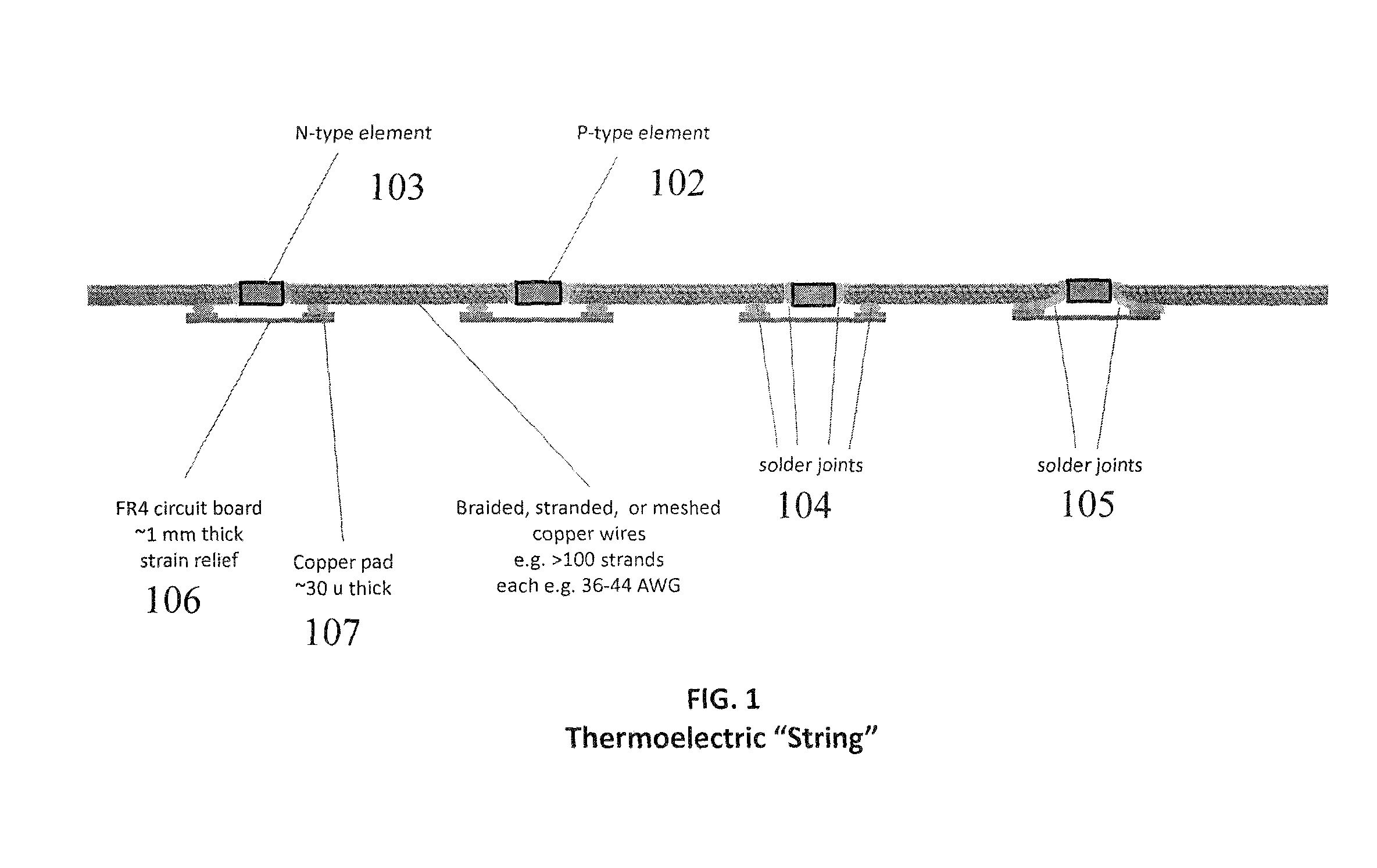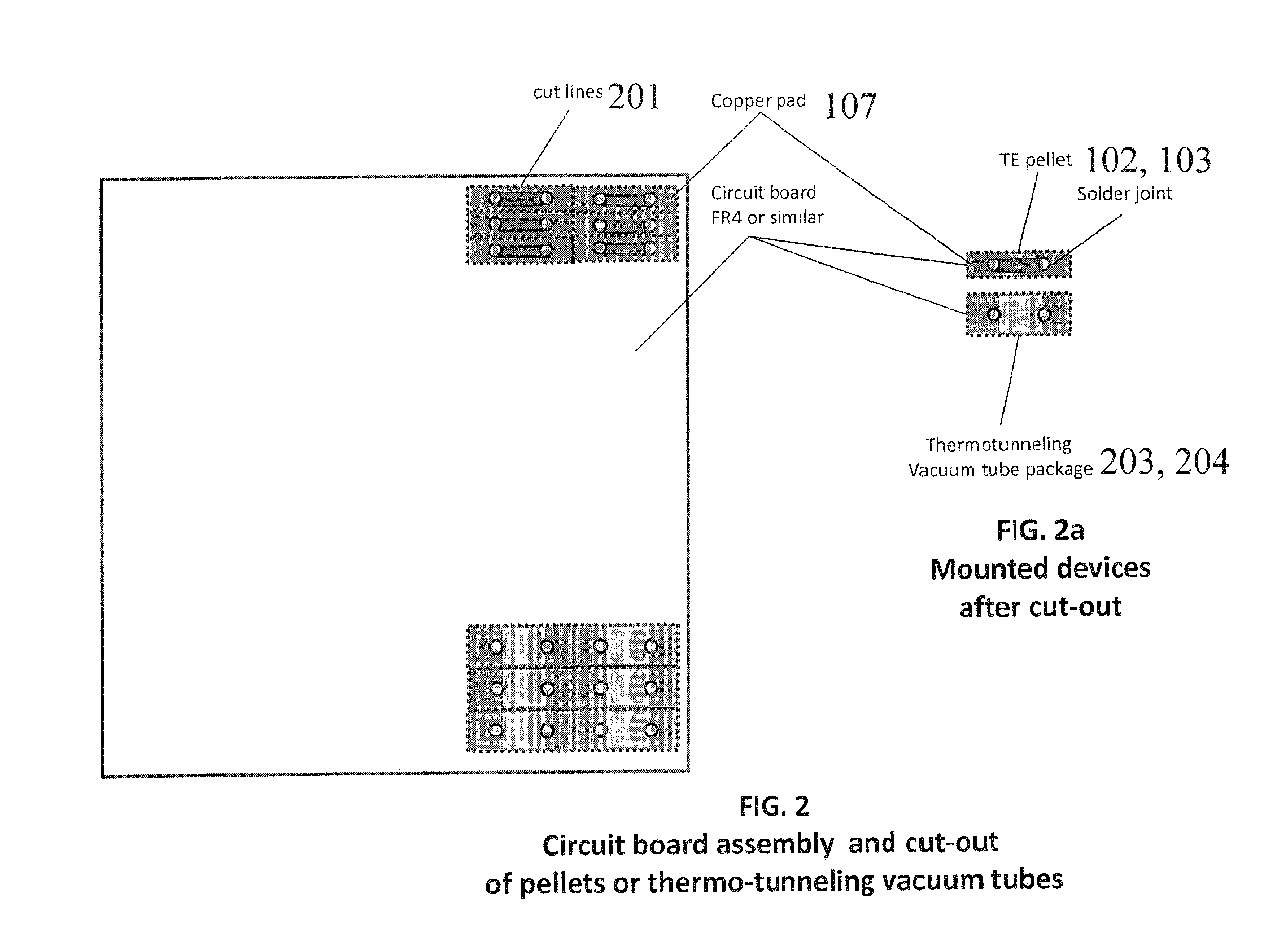Distributed thermoelectric string and insulating panel
a technology of distributed thermoelectric string and insulating panel, which is applied in the manufacture/treatment of thermoelectric devices, lighting and heating apparatus, and the operation mode of machines, etc. it can solve the problems of reducing the overall performance, and requiring expensive materials for vacuum cavities. , to achieve the effect of dissipating thermal energy, reducing overall energy consumption, and dissipating heating and cooling
- Summary
- Abstract
- Description
- Claims
- Application Information
AI Technical Summary
Benefits of technology
Problems solved by technology
Method used
Image
Examples
example 1
A Thermoelectric Cooler using Invention
[0044]FIG. 7a illustrates a thermoelectric cooler 701 using the invention. Four thermoelectric panels 505 were built using a string as shown in FIG. 1 with braid 101 lengths 7 and 11 cm for the cold and hot sides, respectively. The panels were 1-inch (2.54 cm) thick Styrofoam™ 301 with 3 mm diameter holes and a pellet spacing of 3 cm. A total of 256 pellets were inserted into the four populated panels. The four thermoelectric panels were combined with two plain Styrofoam™ panels to construct a small cooler. The invention cooler 701 in FIG. 7a did not contain a heat sink or a fan and was powered with 20 watts of electricity.
[0045]The invention prototype of FIG. 7a was compared with a prior art commercial cooler 702 that contains a prior art thermoelectric module 704 also with 256 pellets, a prior art heat sink 706, and a prior art fan 705. This commercial cooler was powered as designed with 40 watts of electricity.
[0046]FIG. 7d shows the data ta...
example 2
Solar Power Storage and Electricity Generation
[0060]An example power generator in accordance with FIG. 9 will now be described that is competitive with other power generators such as wind turbines and photovoltaic panels. The heat storage medium 905 is 2 m×2 m×0.3 m and is assumed to reach a peak of 100° C. This temperature does not exceed the boiling point of water, and is a temperature easily reached by insulated solar ovens used to cook food. The cold side 901 temperature is assumed to be room temperature or 20° C. The delta temperature ΔT across the thermoelectric panel 902 is then 80° C. and the average temperature is 60° C. The heat storage medium at a temperature elevated by 80° C. relative to ambient stores 4.0 E+8 joules or 112 Kwatt-hours if the heat capacity of water at 4.2 joules / cm3° C. is assumed.
[0061]The insulating material 903 dimensions are 2 m×2 m×0.05 m, and so the thermal loss through the thickness of the insulator at the ΔT of 80° C. is 147 watts if a typical t...
PUM
| Property | Measurement | Unit |
|---|---|---|
| thickness | aaaaa | aaaaa |
| thick | aaaaa | aaaaa |
| perimeter | aaaaa | aaaaa |
Abstract
Description
Claims
Application Information
 Login to View More
Login to View More - R&D
- Intellectual Property
- Life Sciences
- Materials
- Tech Scout
- Unparalleled Data Quality
- Higher Quality Content
- 60% Fewer Hallucinations
Browse by: Latest US Patents, China's latest patents, Technical Efficacy Thesaurus, Application Domain, Technology Topic, Popular Technical Reports.
© 2025 PatSnap. All rights reserved.Legal|Privacy policy|Modern Slavery Act Transparency Statement|Sitemap|About US| Contact US: help@patsnap.com



